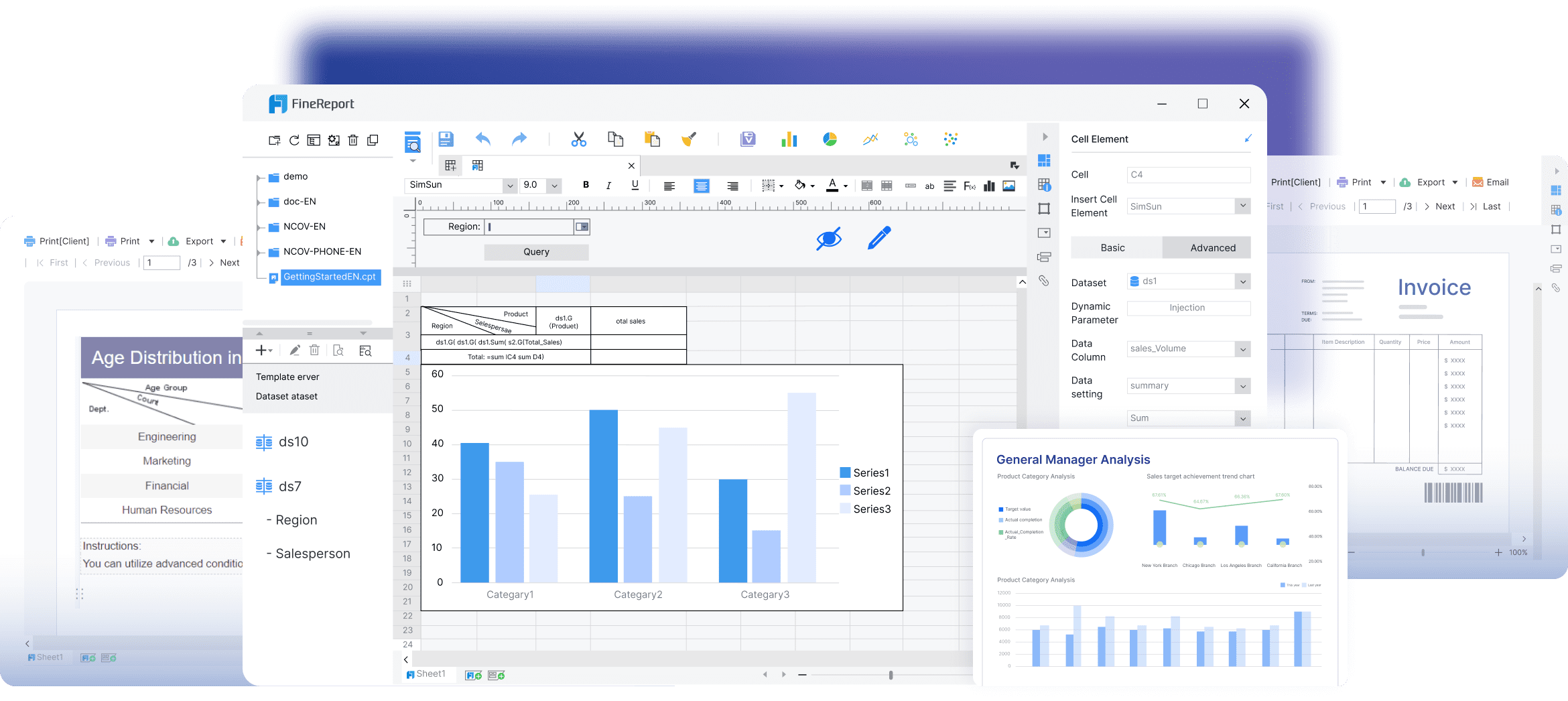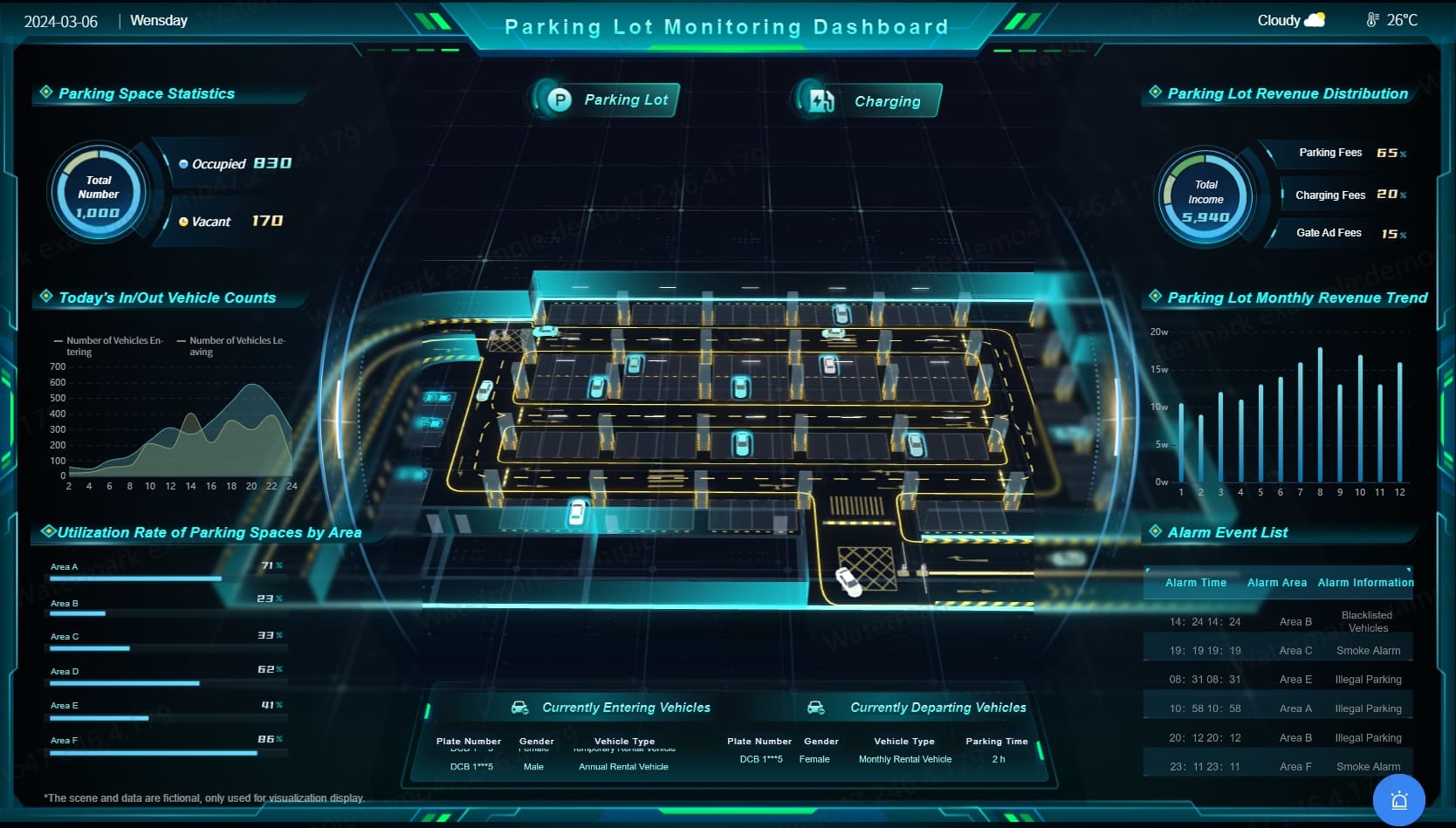

Data silos, isolated pockets of information within organizations, pose significant challenges in today's business landscape. They hinder collaboration and transparency, leading to inefficiencies and missed opportunities. A staggering 83% of executives acknowledge the presence of data silos in their companies, with 97% reporting negative impacts on business operations. Addressing these silos is crucial for enhancing business efficiency. Solutions like FineDataLink, FineReport, FineBI, and FineVis offer innovative ways to integrate and visualize data, breaking down barriers and fostering a more cohesive and informed business environment.
What Are Data Silos?
Definition of Data Silos
Data silos refer to isolated collections of data within an organization. These silos often exist because different departments or teams store their data separately, without sharing it with others. This isolation makes it challenging to access and integrate data across the organization. Oracle describes data silos as repositories that hinder data sharing, making it difficult for teams to collaborate and for leaders to gain insights from comprehensive data analysis.
Characteristics of Data Silos
Data silos possess distinct characteristics that can negatively impact an organization:
- Isolation: Data silos are typically confined to specific departments or systems, leading to a lack of integration. This isolation prevents a unified view of the organization's data, which is crucial for informed decision-making.
- Limited Accessibility: Access to data within silos is often restricted to certain individuals or teams. This limitation reduces collaboration and transparency, creating barriers between departments.
- Inconsistent Data Quality: Data stored in silos may not be updated consistently across the organization. This inconsistency can lead to data accuracy challenges and prevent the establishment of a single source of truth.
- Increased Costs: Maintaining separate data systems for each department can lead to increased operational costs. Resources are wasted on redundant data storage and management efforts.
- Reduced Productivity: The presence of data silos can decrease productivity by making it harder for teams to access the information they need. This inefficiency can result in missed opportunities and poor customer experiences.
Understanding these characteristics is essential for organizations aiming to dismantle data silos and foster a more collaborative and efficient environment. By addressing these issues, businesses can unlock the full potential of their data and drive innovation.
How Do Data Silos Occur?
Organizational Structure
Data silos often emerge from the organizational structure itself. Companies frequently organize into departments or business units, each with its own goals and responsibilities. This separation can lead to isolated data storage, as each department manages its own information. The lack of a centralized data management system exacerbates this issue. Departments may guard their data closely, reluctant to share it with others. This behavior creates barriers to data sharing and collaboration, resulting in data silos.
Technological Limitations
Without proper data integration tools, data remains trapped within individual systems. Additionally, restrictive access controls can prevent data sharing, further isolating information within specific departments or systems.
Cultural Factors
Cultural factors within an organization play a significant role in the creation of data silos. Company principles and culture may discourage data sharing, fostering an environment where departments operate independently. A lack of a company-wide data management mandate can hinder efforts to break down silos. Employees may view data as a source of power, leading to reluctance in sharing it with others. This mindset creates organizational silos, where departments guard their data, limiting collaboration and transparency.
Understanding these factors is crucial for organizations aiming to dismantle data silos. By addressing organizational structure, technological limitations, and cultural factors, businesses can foster a more collaborative and efficient environment.
Why Are Data Silos Problematic?
Impact on Business Efficiency
Data silos significantly hinder business efficiency. They create barriers to internal collaboration, slowing down processes and reducing operational effectiveness. Employees often spend up to 30% of their weekly work hours searching for data trapped in silos. This inefficiency leads to manual data integration efforts, which consume valuable time and resources. Furthermore, data silos negatively affect productivity and data integrity, ultimately impacting revenue. Businesses without data silos experience improved customer experiences, faster time to market, and enhanced overall performance.
Hindrance to Decision-Making
Data silos obstruct smart decision-making by limiting access to comprehensive information. When data resides in isolated pockets, decision-makers lack a unified view of the organization. This fragmentation results in incomplete insights, leading to flawed decisions. The absence of integrated data hampers visibility and transparency, reducing team trust and collaboration. Companies with dismantled data silos benefit from better decision-making capabilities, as they can manage and utilize data more effectively.
Increased Operational Costs
Maintaining data silos incurs significant operational costs. These costs arise from redundant data storage and management efforts across departments. Data duplication and inefficient processes waste resources and increase the risk of errors. Additionally, data silos lead to missed sales opportunities and poor business outcomes, further escalating costs. By breaking down data silos, organizations can lower technology and data management expenses, improving their financial health and operational efficiency.
Identifying Data Silos in Your Organization
Recognizing data silos within an organization is crucial for improving collaboration and efficiency. These isolated data pockets can lead to fragmented information, eroded data quality, and increased chances of losing valuable insights. Identifying the signs of data silos and utilizing the right tools can help organizations address these challenges effectively.
Signs of Data Silos
Organizations can look for several indicators to identify the presence of data silos:
- Limited Data Sharing: When departments or teams rarely share data with each other, it often signals the existence of data silos. This lack of sharing can hinder collaboration and transparency.
- Inconsistent Data Formats: Different departments using varied data formats can indicate siloed data. This inconsistency complicates data integration and analysis.
- Redundant Data Storage: Multiple departments storing similar data separately suggests duplication of efforts, a common characteristic of data silos.
- Delayed Decision-Making: If decision-making processes are slow due to inaccessible or fragmented data, it may point to data silos obstructing efficient information flow.
- Communication Gaps: Frequent misunderstandings or miscommunications between departments can arise from siloed data, leading to reduced team trust and collaboration.
Tools for Identifying Data Silos
Organizations can leverage various tools to detect and address data silos:
- Data Integration Platforms: Tools like FineDataLink offer seamless data integration across multiple systems, helping to break down silos by enabling real-time data synchronization.
- Business Intelligence Software: Solutions such as FineBI and FineReport provide comprehensive data analysis and reporting capabilities, allowing organizations to gain insights from unified data sources.
- Data Visualization Tools: Platforms like FineVis facilitate the creation of interactive dashboards and visualizations, making it easier to identify and address data silos by providing a clear view of data across departments.
- Collaboration Software: Implementing collaboration tools can enhance communication and data sharing among teams, reducing the likelihood of data silos forming.
By recognizing the signs of data silos and employing the right tools, organizations can improve data accessibility, enhance decision-making, and foster a more collaborative environment. Addressing data silos not only boosts productivity but also ensures that businesses can fully leverage their data assets for strategic growth.
Strategies for Breaking Down Data Silos

Organizations can employ various strategies to dismantle data silos, enhancing collaboration and efficiency. These strategies encompass both technological and cultural solutions, each playing a crucial role in fostering a more integrated data environment.
Technological Solutions
Data Integration Tools
Data integration tools serve as a cornerstone in breaking down data silos. These tools, such as ETL (Extract, Transform, Load) and ELT (Extract, Load, Transform), facilitate seamless information exchange between disparate systems. By automating data exports from platforms like CRM and ERP, organizations can maintain up-to-date data across departments. Third-party solutions often provide interfaces for data integration tools, ensuring that data flows smoothly between applications. A centralized data source further eliminates silos, granting enterprise-wide access to information.
Cloud-Based Solutions
Cloud-based platforms offer scalable solutions for data storage and processing. Providers like AWS, Azure, and Google Cloud enable organizations to store large datasets and access them from anywhere. These platforms come equipped with built-in ETL tools, which assist in migrating data out of siloed sources while transforming it as needed. By leveraging cloud services, businesses can integrate and analyze data more efficiently, reducing the barriers created by isolated data repositories.
Cultural Solutions
Encouraging Collaboration
Fostering a culture of collaboration is essential in addressing data silos. Organizations should encourage open communication and data sharing among departments. By promoting cross-departmental projects and initiatives, businesses can break down the barriers that lead to isolated data pockets. Encouraging employees to view data as a shared resource rather than a departmental asset enhances transparency and trust within the organization.
Leadership Initiatives
Leadership plays a pivotal role in dismantling data silos. Leaders must champion data integration efforts and set a clear mandate for data sharing across the organization. By prioritizing data management and integration in strategic planning, leaders can drive cultural change and align departmental goals with the organization's overall objectives. Leadership initiatives that emphasize the importance of a unified data strategy can significantly reduce the prevalence of data silos.
By implementing these strategies, organizations can effectively break down data silos, leading to improved data accessibility and enhanced decision-making capabilities. Embracing both technological and cultural solutions ensures a comprehensive approach to overcoming the challenges posed by isolated data.
Benefits of Overcoming Data Silos
Improved Business Operations
Eliminating data silos enhances business operations significantly. When organizations integrate data across departments, they streamline processes and reduce redundancies. Teams access comprehensive information, which leads to more efficient workflows. For instance, when marketing and sales teams share data seamlessly, they align their strategies better, resulting in increased sales and customer satisfaction. This integration minimizes errors and accelerates task completion, ultimately boosting productivity.
Enhanced Decision-Making
Breaking down data silos empowers decision-makers with a holistic view of the organization. Access to unified data enables leaders to make informed choices based on accurate insights rather than assumptions. For example, a company that integrates financial and operational data can identify cost-saving opportunities more effectively. This comprehensive perspective fosters strategic planning and risk management, ensuring that decisions align with organizational goals. As a result, businesses experience improved outcomes and competitive advantages.
Greater Innovation and Agility
Organizations that overcome data silos foster an environment of innovation and agility. By promoting data democratization, teams collaborate more effectively and leverage diverse perspectives. This collaboration encourages creative problem-solving and the development of innovative solutions. For instance, when research and development teams share insights with production units, they can accelerate product development cycles. Additionally, agile organizations respond swiftly to market changes, adapting strategies based on real-time data. This adaptability positions businesses to seize new opportunities and maintain a competitive edge.
Case Studies of Successful Data Silo Elimination

Example 1: FanRuan's FineDataLink
FanRuan's FineDataLink offers a compelling example of successful data silo elimination. Many organizations struggle with isolated data systems, which hinder their ability to access and integrate information. FineDataLink addresses this challenge by providing a robust data integration platform. It enables real-time data synchronization across multiple systems, ensuring seamless data flow. Companies using FineDataLink report significant improvements in data accessibility and operational efficiency. By integrating data from various sources, they achieve a unified view of their business operations. This integration facilitates better decision-making and enhances overall productivity.
Example 2: FineReport and FineBI Integration
The integration of FineReport and FineBI showcases another successful approach to eliminating data silos. FineReport, known for its advanced reporting capabilities, allows organizations to create dynamic reports and dashboards. When combined with FineBI, a self-service business intelligence tool, businesses can analyze and visualize data more effectively. This integration breaks down data silos by providing a comprehensive platform for data analysis and reporting. Organizations benefit from improved data insights and enhanced collaboration among departments. The seamless integration of FineReport and FineBI empowers teams to make informed decisions based on accurate and timely data.
The Role of FanRuan in Addressing Data Silos
FanRuan plays a pivotal role in addressing data silos by offering a suite of innovative solutions that enhance data integration, reporting, and business intelligence. These tools empower organizations to break down barriers and foster a more cohesive data environment.
FineDataLink for Real-Time Data Integration
FineDataLink serves as a comprehensive platform for real-time data integration. It enables organizations to synchronize data across multiple systems with minimal latency. This capability ensures that data remains consistent and accessible throughout the enterprise. By employing flexible ETL (Extract, Transform, Load) and ELT (Extract, Load, Transform) processes, FineDataLink enhances data quality and facilitates seamless information exchange. Organizations can leverage this tool to eliminate data silos, allowing for a unified view of their operations and enabling informed decision-making.

FineReport for Enhanced Reporting and Analytics
FineReport offers advanced reporting and analytics capabilities that help organizations gain deeper insights from their data. With its intuitive drag-and-drop interface, users can create dynamic reports and dashboards effortlessly. FineReport connects to various data sources, providing a comprehensive platform for data analysis. This integration allows businesses to visualize data in real-time, uncovering trends and patterns that may otherwise remain hidden. By utilizing FineReport, organizations can enhance their reporting processes, leading to improved operational efficiency and strategic planning.

FineBI for Self-Service Business Intelligence
FineBI empowers business users and data analysts with self-service business intelligence tools. It enables users to connect, analyze, and share data across the organization, facilitating informed decision-making. FineBI's high-performance computing engine processes massive datasets, supporting real-time analysis and boosting productivity. The software's flexible ETL and ELT data processing modes ensure high data quality and security. By transforming raw data into actionable insights, FineBI helps organizations improve decision-making and business performance across various sectors.

FineVis for Advanced Data Visualization
FineVis stands out as a powerful tool for advanced data visualization. It offers over 60 chart types, allowing users to create live visualizations in minutes. This capability proves invaluable for tracking trends, analyzing data, and presenting insights. Users can craft compelling and informative charts effortlessly, enhancing their ability to communicate complex data effectively.

The platform's intuitive drag-and-drop interface requires no coding skills, making it accessible to users of all technical levels. This feature democratizes data visualization, enabling everyone from beginners to advanced analysts to leverage its capabilities. The zero-code development approach ensures that users can focus on the insights rather than the technicalities of creating visualizations.
FineVis supports dynamic 3D visualizations, which add depth and interactivity to data presentations. These visualizations help users explore data from multiple angles, uncovering patterns and relationships that might remain hidden in traditional charts. The ability to visualize data in three dimensions enhances understanding and facilitates more informed decision-making.
Additionally, FineVis offers customizable dashboards that adapt to various devices, including smartphones, tablets, PCs, and large screens. This adaptability ensures that users can access and analyze data anytime, anywhere, fostering a culture of data-driven decision-making within organizations. The platform's real-time analytics capabilities further enhance its value, providing immediate insights that drive timely and effective actions.
By integrating with FineDataLink, FineVis ensures seamless data flow across systems, maintaining high data quality and consistency. This integration supports flexible ETL and ELT data development, enabling organizations to harness the full potential of their data assets. As a result, businesses can break down data silos, achieve a unified view of their operations, and enhance their overall performance.
Addressing data silos remains crucial for modern businesses. These isolated data pockets hinder collaboration, reduce productivity, and increase costs. Integrated data systems offer long-term benefits by enhancing transparency and decision-making. Organizations can unlock their full potential by breaking down silos, leading to improved operations and innovation. Proactive measures, such as educating team members on data management and promoting a culture of collaboration, prevent future silos. By embracing these strategies, businesses can thrive in a competitive landscape, leveraging data as a powerful asset for growth and success.
FAQ
Data silos refer to isolated collections of data within an organization. These silos often arise when different departments or teams store their data separately, without sharing it with others. This isolation makes it difficult to access and integrate data across the organization.
Data silos typically form due to organizational structure, technological limitations, and cultural factors. Departments may manage their own data independently, leading to isolated storage. Disparate systems that lack interoperability can also contribute to silo formation. Additionally, company culture may discourage data sharing, further isolating information.
Data silos hinder business efficiency by creating barriers to collaboration and decision-making. They lead to redundant data storage, increased operational costs, and reduced productivity. Silos also obstruct smart decision-making by limiting access to comprehensive information, resulting in incomplete insights and flawed decisions.
Signs of data silos include limited data sharing between departments, inconsistent data formats, redundant data storage, delayed decision-making, and communication gaps. These indicators suggest that data is not being integrated effectively across the organization.
Organizations can dismantle data silos through technological and cultural solutions. Technological solutions include using data integration tools like FineDataLink and cloud-based platforms for seamless data exchange. Cultural solutions involve encouraging collaboration and leadership initiatives to promote data sharing.
Overcoming data silos leads to improved business operations, enhanced decision-making, and greater innovation. Integrated data allows for streamlined processes, efficient workflows, and a holistic view of the organization. This fosters strategic planning, risk management, and a culture of innovation and agility.
FineVis aids in breaking down data silos by offering advanced data visualization tools. With over 60 chart types and dynamic 3D visualizations, users can create compelling charts effortlessly. The platform's zero-code interface and adaptive design ensure seamless access to data across various devices, promoting a unified view of business operations.
Continue Reading About Data Silo
10 Game-Changing Project Management Reporting Types!
Unlock project success with 10 must-know reporting types! Track progress, manage risks, and stay on budget like a pro.
Lewis
Mar 03, 2025
10 Must-Have Marketing Agency Reporting Tools for Your Success
Optimize your agency's performance with top reporting tools. Explore analytics, social media, SEO, and more for data-driven decisions and efficiency.
Lewis
Oct 09, 2024
15 Best Software Reporting Tools for 2025
Explore the top 15 software reporting tools for 2025. Compare features, pricing, and usability to find the best fit for your business needs.
Lewis
Oct 08, 2024
2025 Best Data Integration Solutions and Selection Guide
Explore top data integration solutions for 2025, enhancing data management and operational efficiency with leading platforms like Fivetran and Talend.
Howard
Dec 19, 2024
2025 Data Pipeline Examples: Learn & Master with Ease!
Unlock 2025’s Data Pipeline Examples! Discover how they automate data flow, boost quality, and deliver real-time insights for smarter business decisions.
Howard
Feb 24, 2025
2025's Best Data Validation Tools: Top 7 Picks
Explore the top 7 data validation tools of 2025, featuring key features, benefits, user experiences, and pricing to ensure accurate and reliable data.
Howard
Aug 09, 2024


